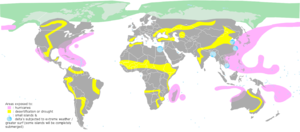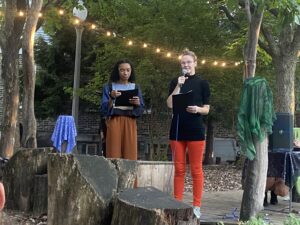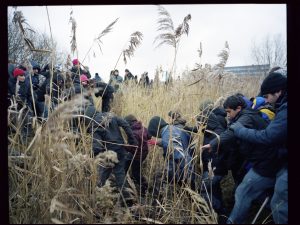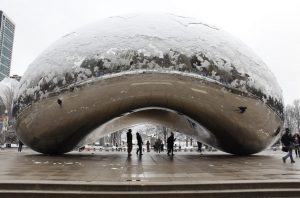In a week marked by the coldest night of the year and an evening of warm torrential rains, the Chicago Headline Club convoked to discuss the inevitability of climate change with a group of expert panelists.
Early in February, scientists and science journalists gathered at the Cactus Bar and Grill, 404 S. Wells St., to put focus on a pressing issue: poor reportage on our world’s changing climate. In the midst of the New York Times and CIA dismantling their environmental departments, environmental activists are more concerned than ever that the veritable effects of severe climate fluctuations may not be receiving coverage in the ways they should be, resulting in dangerous misunderstandings among American audiences.

Hot button issues concerned a failure by the national media to properly contextualize stories, a tendency to sensationalize the problems in a way that obscured the truth, general misuse of terminology, and, of course, the catastrophic ramifications of recent climate disasters.
“Mistakes in environmental coverage by the national media are problematic,” said Mary Wisniewski, a Reuters national correspondent. “We mostly hear about peripheral issues.”
Problems also come with the use of phrases like “Global Warming” by the media, which many scientists feel is a fragmentation of the diverse array of weather symptoms that are affecting populations worldwide.
“Climate change is more than a story, it’s a subject that must be given a context,” said Peter Bohan, the Chicago bureau chief for Reuters. “The terminology is very important. We prefer climate change. We try to avoid emotive terminology.”
But while simplified terms like global warming may not be entirely appropriate to describe all of what is happening, experts still feel that the warming of Earth is becoming an irrefutable factor of climate change.
“People up to 28 years old have never experienced a global climate temperature that is below average,” said David Archer, a University of Chicago professor of geophysical science. “Climate models agree in terms of changes globally, but it’s more difficult to determine what’s happening locally.”
While the local effects of climate change may be harder to gauge in developed countries like America, recent disasters like Hurricane Sandy portend that the impacts are still hitting close to home, and in more ways than one.
“One of the most insidious things about what is happening is that it’s happening from the bottom up,” said Wisniewski. “When 500 people died of a heat wave in Chicago, they were mostly poor.”
According to the World Health Organization, developing countries will be least able to cope with natural disasters caused by climate change without assistance, and Earth’s gradual warming since the 1970s has caused more than approximately 140,000 excess deaths annually.
Temperature fluctuations and abnormally long warm spells create breeding grounds for killers like diarrhoeal diseases, malnutrition, malaria, and dengue, ailments which are all highly climate sensitive, and as the climate shifts globally, even at home in the United States, the ecological upset could cause severe medical and agricultural problems.

“The growing season is two weeks longer than it was 30 years ago,” Bohan said. “The climate is moving north. South Dakota will be the next Iowa.”
Another stimulant for the spread of diseases are floods,—like the historic flood of Nashville, TN in 2010—which contaminate freshwater supplies, heighten the risk of water-borne diseases, and create breeding grounds for disease-carrying insects such as mosquitoes.
The number of reported weather-related disasters has more than tripled since the 1960s, according to WHO, and the death tolls are highest in developing countries and among the poor.
“You don’t have to look overseas to find people directly impacted by societal structure in the face of climate change,” said Jeff Kelly Lowenstein, an investigative editor for Hoy who writes about climate change.
According to 2013’s Climate Risk Index, the accumulation of several severe natural disasters makes 2011 one of the highest loss years on record. Approximately 900 people died in Thailand’s floods, while 200 people died in floods in Cambodia.
In 2010 alone, western Russia had the hottest summer since 1500, causing 500 wildfires around Moscow, a crop failure of 25 percent, a death toll of about 55,000, and 15 billion dollars in losses; Pakistan had rainfall records resulting in the worst flooding in its history, nearly 3,000 deaths and 20 million lives affected; eastern Australia had the highest December rainfall ever recorded since 1900 with a flooding in Brisbane that killed 23 and caused 2.6 billion dollars in damages; and Columbia had the heaviest rains since records started in 1969, causing 47 deaths and leaving 80 missing.
The index suggests that climate risk is significant for Central America, the United States, Asia, Australia and the European Peninsula.
“There are debates over climate effects and policy, but not over what the effects of it will be,” said Wisniewski. “Things seem like they will be the way they are forever, and then overnight they change.”


















Be First to Comment